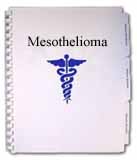Lung Cancer Diagnosis
There are several factors taken into account to diagnose lung cancer, such as the patient's medical history, whether or not there is a history of smoking and the duration, environmental or occupational exposure, and the family's history of cancer. A physical exam of the patient will need to be performed and your doctor may order a chest x-ray. Sputum cytology (examination of microscopic mucus cells from the lungs after a deep cough) may be used for diagnosis. Most importantly, to reach a diagnosis of lung cancer, the doctor will need to obtain a sample of tissue from the lung to be examined under a microscope.
The tissue sampling, or biopsy, may be performed by one or more of the below methods:
- Bronchoscopy – Through the use of a thin, lighted tube inserted through the mouth or nose into the windpipe to view breathing passages, cells or small tissue samples can be collected.
- Needle Aspiration – Through the use of a needle inserted in the chest directly into the tumor, a sample of tissue is removed.
- Thoracentesis – A needle is used to obtain a sample of fluids surrounding the lungs.
- Thoracotomy – A major operation is performed to open the chest cavity to obtain a sample.

